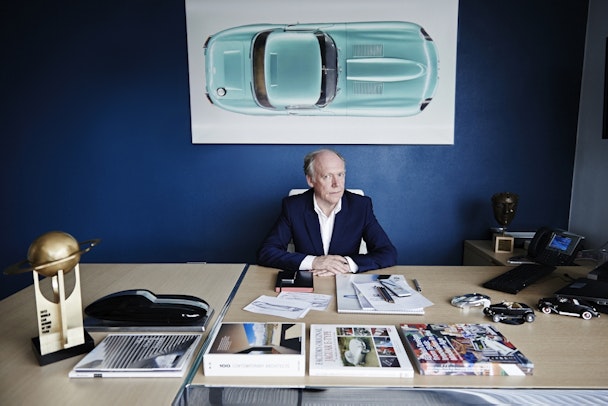As Jaguar prepares for a new era, its design head greets data-led creative with caution
Jaguar collects a lot of data from its drivers – from the speed at which they travel and the length of their journeys to the colours they prefer their cars to be. But while this information has its uses, the auto brand’s director of design believes it also has the ability to hold back innovation and force designers to recreate the same car over and over again.

Ian Callum, Jaguar's head of design
The past decade has seen chief marketing officers agonise over their new responsibility for monitoring data in the form of campaign metrics and battening down the hatches of their organisations ahead of GDPR. At the same time, it is data that can make or break a CMO’s tenure (one ill-received or ineffective campaign can line a path to the door), meaning the relationship between instant insight and marketers’ is often fraught.
But it’s not just the marketing world that has a love-hate relationship with data: design is not immune to its fickleness either.
“I’m a little belligerent towards the data that comes out of marketing,” Ian Callum, Jaguar's director of design, told The Drum. “Myself and the team will listen to the market and consumer research and absorb it, then we’ll go off and do what we believe is right.”
Callum has earned the right to take this gut instinct approach. He completed 11 years at Ford in the 80s and has nearly clocked up 20 at Jaguar, where he is widely credited for moving the brand out of its retro funk. As he puts it himself: “It was just the old man’s car company, but we changed it [to become a] modern, vibrant, fun loving company.”
Callum’s cautious approach to data comes from a logical worry that by listening too closely to insight from the present, designers will be distracted from thinking in the future – a crucial ability in an industry about to face an influx of change in the form of electric and autonomous driving.
“I do believe that a lot of customers don’t know what they want until they see it,” he explained. “I don’t mean that in an arrogant way – but if you look at the cars we’re making now … you wouldn’t have dreamt them 10 years ago. We have to be confident that we can step ahead of popular visibility.
“You have to step in and say: ‘Actually, this is the next way forward.’ You cannot let creativity be overruled entirely by data: it will cripple you. You’ll end up with the same car every time.”

The future-gazing talents of Callum’s team will be on display at the Design Frontiers exhibition at London's Somerset House on 18-24 September, alongside the likes of Swarovski, Pentland Brands and Benjamin Hubert’s Layer. The car maker will exhibit across two rooms: the first aims to re-educate visitors on a vehicle’s evolution from sketch to production, while the second will house a 3D model of a concept car Jaguar has designed for the future.
“It’s really a placeholder of what might happen,” said Callum. “There’ll be some messages there about how this car could become useful to more than one person – once you’ve got autonomous cars, they can be on the road 24 hours a day, if people are prepared to not own them. This social aspect is very interesting to us and it’s something that we’ve got to understand as a business.”
This not-so-futuristic shift in the relationship between car and person will also need to be high on the consideration list of marketers in the automotive business, Callum believes.
“If people just want autonomous anonymous cars then there’s not much hope for branding in the car world in the future,” he said. “Perhaps, then, the highest level of branding will be on your phone and your clothes and the car will just become a capsule. But I don’t believe people will be like that.
“I think they’ll still want to be seen in a specific car that gives them an emotional connection and because they can – I think status will still prevail.”

This futurist way of thinking – more commonly associated with anthropologists than car designers – can only make the creative process more difficult. In Jaguar’s world this has already been remastered with the arrival of the electric car revolution, although according Callum, designing the new I-Pace model has been liberating (“All my life we’ve been constrained by this engine box and mechanical bits and now I can start to move things around”).
How does he make sure his creativity stands up against both a volatile industry and the lethargy that must come after decades of designing cars?
“I get very anxious about staying creative,” he said. “I start worrying I’m not thinking freely enough. But I go away for a week – it sometimes works – and I listen to the music I used to listen to when I was younger and wanted to change the world. That gets me back into the right frame of mind, and I become inspired.”

